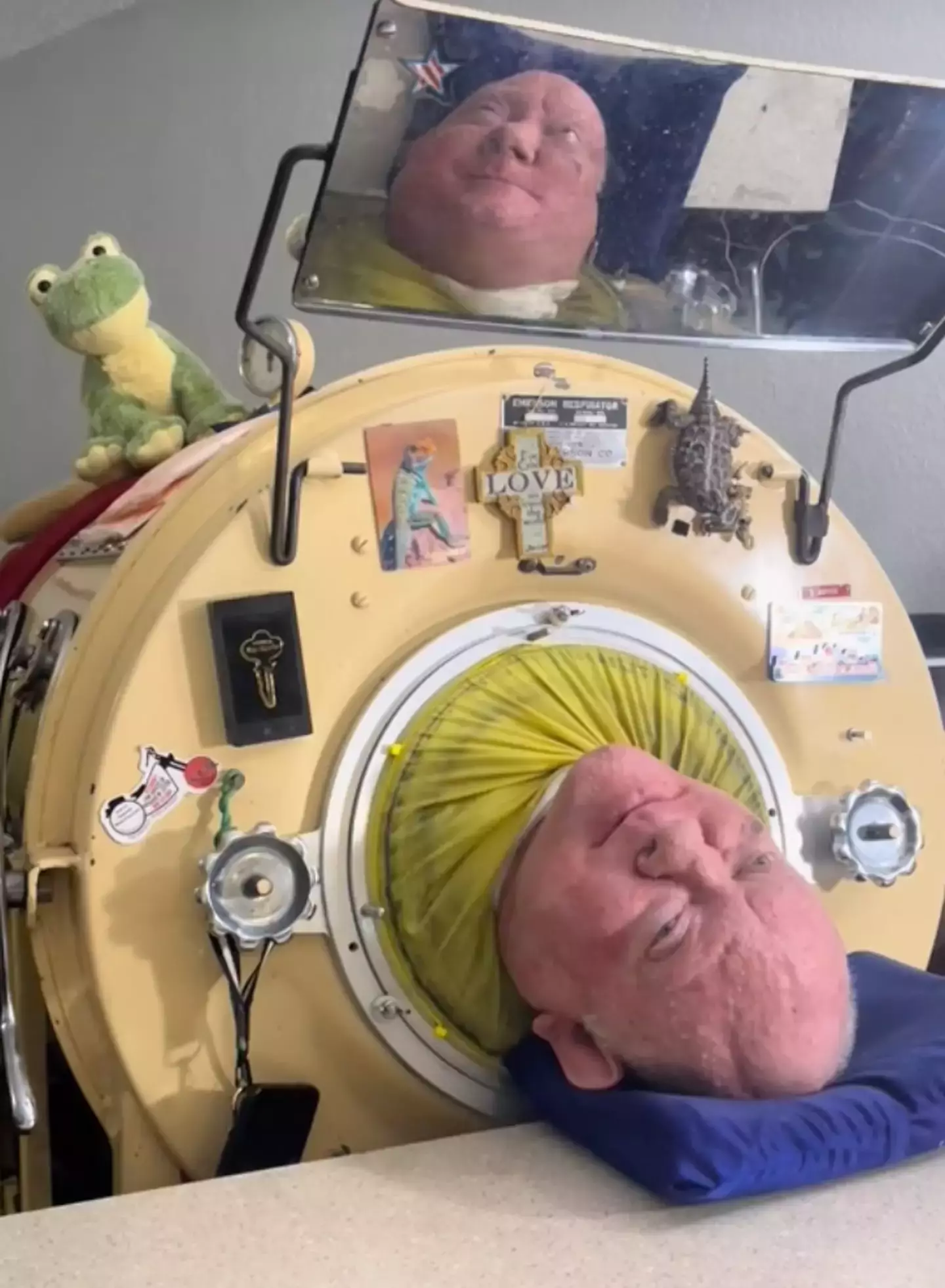
Paul Alexander, the 'Man in the Iron Lung' who spent more that seven decades in one of the medical devices, has sadly died at the age of 78.
He had been paralysed from the neck down after contracting polio at the age of six, but was able to survive thanks to the iron lung and lived a long, fulfilling life where he studied to become a lawyer.
Advert
While he was able to survive for periods of time outside the iron lung by doing something called 'frog breathing', he was generally dependent on it for his life.
Frog breathing, also known as glossopharyngeal breathing, is a means of getting air into the lungs which Paul taught himself so he could leave the iron lung for short periods of time.
This helped him in his journey to become a lawyer as he couldn't use the iron lung during the bar exam and thus had to use this technique for it.

So, how does an iron lung work and how was it able to keep Paul alive for more than 70 years?
First used to save a life in 1928, the iron lung was made by a team at Harvard University to counteract paralysis of the chest muscles from diseases such as polio.
Advert
In essence an iron lung was a metal box attached to bellows, with the suction from the bellows able to keep a patient breathing.
Here's the science-y bit, the iron lung pushes air into a patient's lungs using something called External Negative Pressure Ventilation.
As the bellows on the iron lung suck air out of the chamber the patient is in their lungs automatically expand, drawing in fresh air.

When they let air back in the air pressure rose and pushed air back out, creating a respiratory cycle for people.
Advert
Most patients with polio spent weeks or even months in an iron lung, but for those like Paul who suffered serious paralysis it was a matter of living inside forever.
Over time iron lungs were replaced by ventilators that used something called a Positive Pressure Ventilation System, where air is pushed directly into a patient's lungs through a tube.
Before he died, Paul explained what happened to his iron lung when the electricity cut out.

He said: "Say the electricity goes out - bad storm, no electricity. The iron lung does not work because it’s all run by electric pulses - so if the electricity goes out, it stops and I stop breathing.
Advert
"To me, that’s life or death if it doesn’t start back up, it’s death, because I can’t breathe very long on my own without the iron lung.
“I’ve had my attendant before in the middle of the night, Kathy, come running in in the dark with no electricity, no lights, but came right over to me leaned over and put her lips on mine and blew air into my lungs.
"She was a warrior and she saved my life."
Featured Image Credit: TikTok/@ironlungman